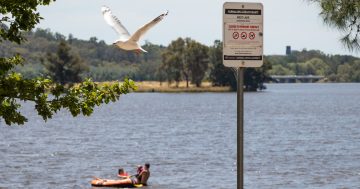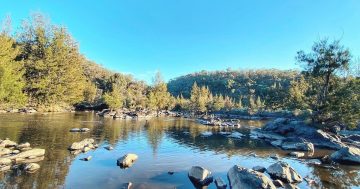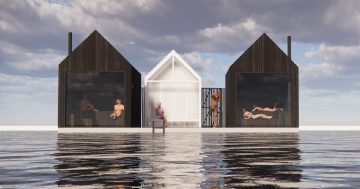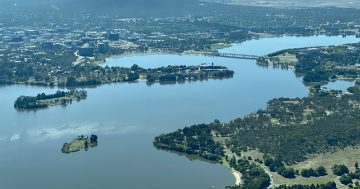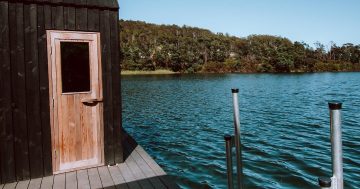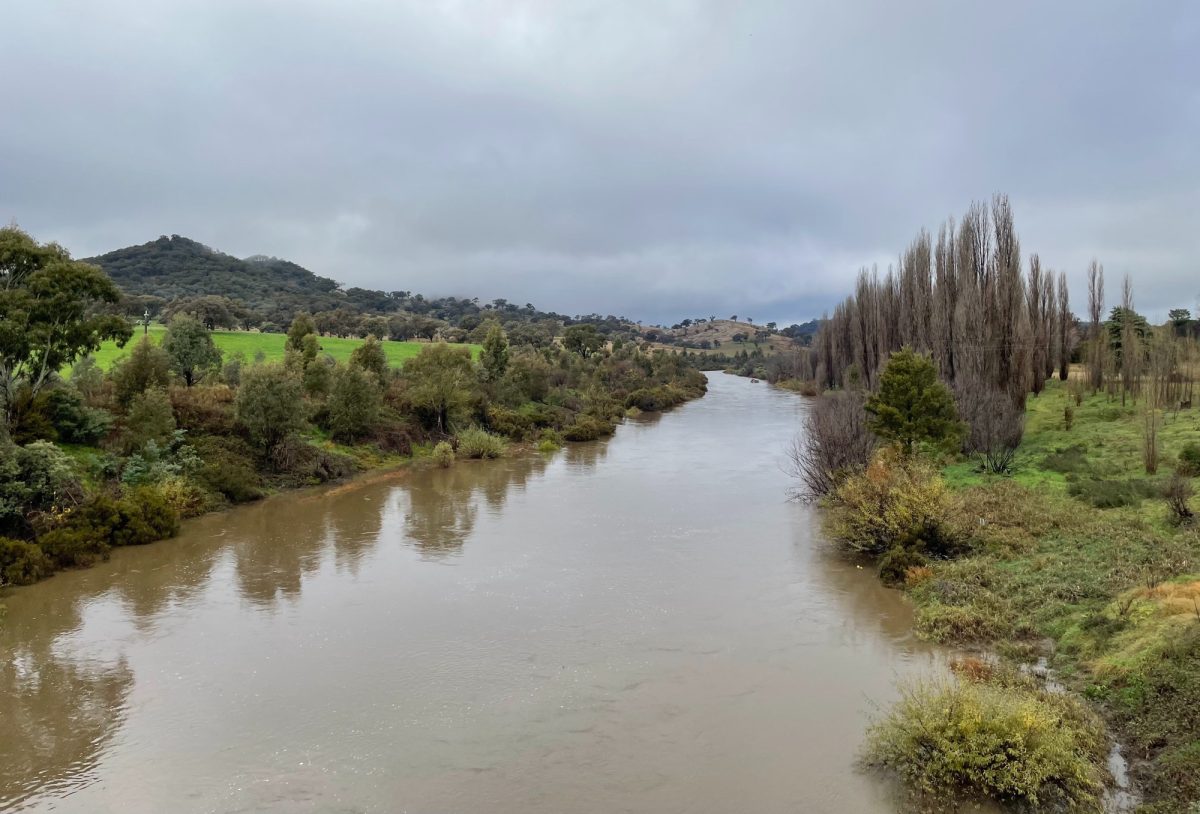
The Murrumbidgee River, as seen upstream of the Tharwa Bridge. Photo: Andy Lowes.
Twice so far this summer, Canberrans looking to cool off in one of the many natural waterways have been left with nowhere to go.
First of all, the ACT Parks and Conservation office closed a number of popular swimming holes to ‘primary contact recreation’ in early December, including Casuarina Sands, East and West Uriarra, Kambah Pool, Point Hut Crossing, Swamp Creek, Tharwa Bridge and Murrays Corner. These and others were also closed in the lead-up to Australia Day.
According to the ACT Health website, primary contact recreation “involves whole-body contact in which the entire body or the face and trunk are frequently immersed, or the face is frequently wet by water spray”.
“Examples of primary contact recreation include swimming, diving, water-skiing, windsurfing and white-water canoeing.”
Then there were reports of kids who attended the Canberra Aqua Park at Black Mountain Peninsula over the school holidays coming down with gastro-like symptoms.
The National Capital Authority (NCA) website says swimming in an area closed to primary contact recreation can lead to “adverse health reactions”, including “intestinal illnesses, such as self-limiting gastroenteritis, which may often be of short duration, respiratory illness, ear infections and skin and eye problems”.
“Swimming should be avoided for several days after heavy rainfall as bacterial levels are strongly affected by such events.”
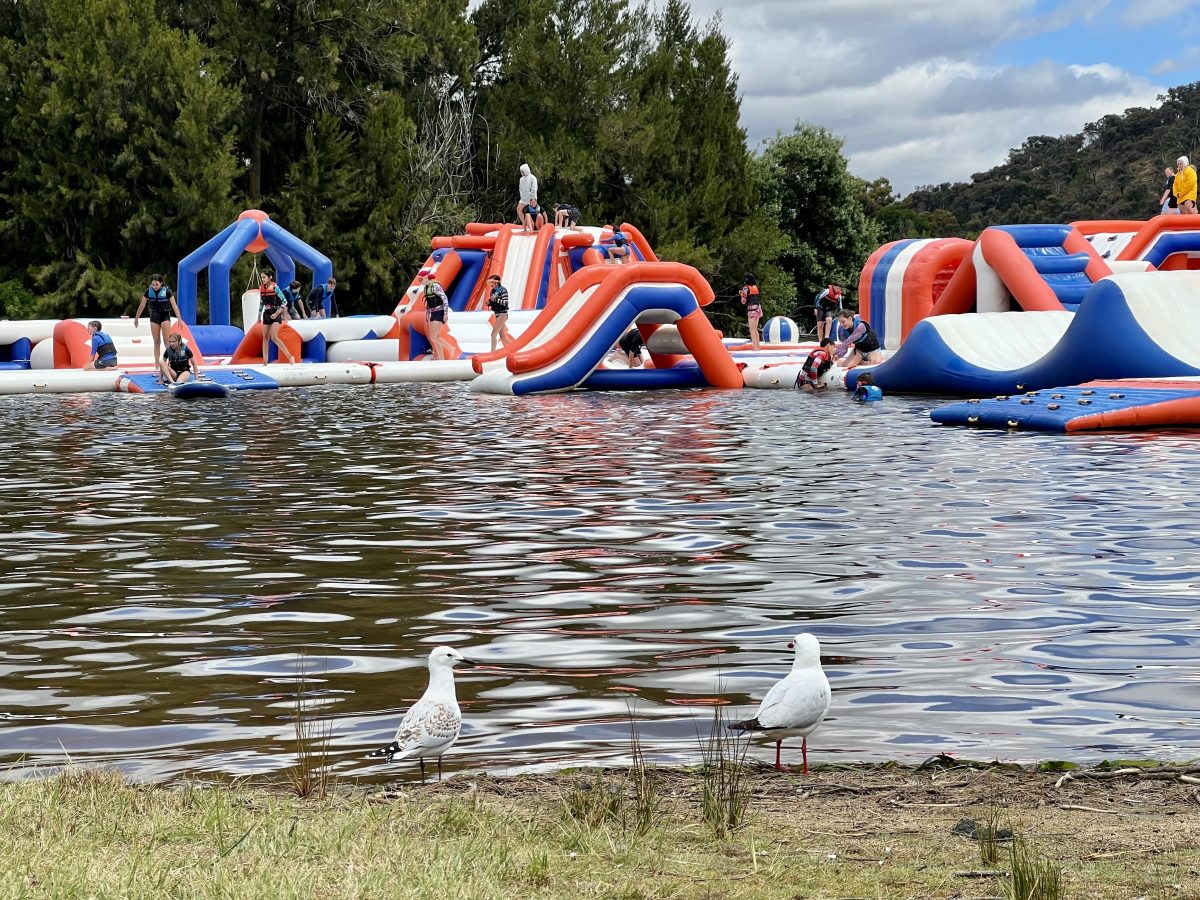
The Canberra Aqua Park takes over Black Mountain Peninsula for the school holidays every year. Photo: James Coleman.
We’ve all heard of the dangers of blue-green algae, but what bacteria are they talking about? And how much is enough to close a waterway?
Every Monday between October and April, officers from ACT Health’s Health Protection Service collect 100 ml water samples from 17 sites around the ACT. Nine samples are taken from within the Murrumbidgee River, three from Lake Tuggeranong, four from Lake Ginninderra, and one from the Molonglo River.
Within four hours, these samples are taken to the ACT Government’s Microbiology Laboratory Unit, the same place where food-related disease outbreaks are investigated.
“Testing is conducted for the group of bacteria called intestinal enterococci,” an ACT Government spokesperson says.
“If the levels of intestinal enterococci are greater than 200 cfu/100 mL in two consecutive samples then the site is to be closed.”
‘Intestinal enterococci’ is a type of bacteria common to healthy human intestines in the form of e. faecalis or e. faecium.
E. faecalis is known to cause endocarditis, sepsis, urinary tract infections (UTIs), meningitis and other infections if it gets in the wrong place, and e. faecium diseases such as neonatal meningitis or endocarditis. More common from either of them is gastroenteritis (or ‘gastro’).
They’re tough bacteria too, capable of surviving temperatures between 10 and 45 degrees and high pH (4.6 to 9.9) and salt concentrations.
The ‘cfu’ in the measurement stands for ‘colony-forming unit’, a term in microbiology for describing the number of cells (bacteria, viruses, fungi, etc) alive and capable of multiplying.
“For a site to be reopened again, it requires two consecutive results less than or equal to 200 cfu/100 ml of intestinal enterococci,” the government says.
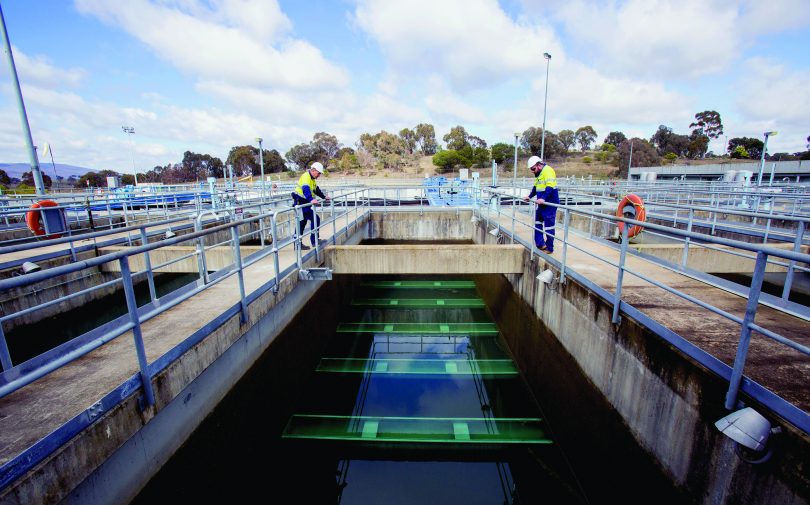
Icon Water testing water at the Lower Molonglo Water Quality Control Centre wastewater treatment plant. Photo: Icon Water.
But where are these nasties coming from?
Like the NCA, the ACT Government says heavy rainfall is largely to blame for producing “more run-off”.
“Agricultural and urban run-off can introduce chemicals, stormwater, litter, sewage and animal waste to the water.”
Perhaps more worryingly, “other bathers” are included on the list too. But before you think this is someone who’s been caught out midstream at the Cotter, most of the bacteria gets into the water when it’s washed off the skin in a process called “shedding”.
Just when you thought it was safe to get back in












